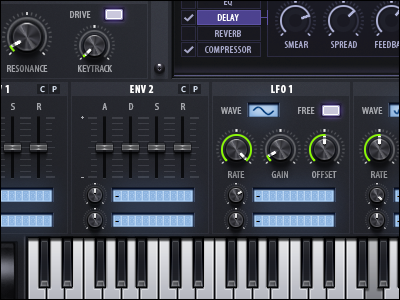
A blue-shaded arrow lights to show that these notes are now held, or tied – replicating the slide feature on the original 303.Ī good deal of the magic of the 303 lay in its freaky voltage-controlled filter, which, coupled with its screaming resonance and the ability to tweak the filter’s cutoff frequency on the fly, pretty much defined the sound of acid. To model this using Sylenth, we’ll be using the filters, a modulation envelope and some glide.įirst up, in the Filter A section, click and drag in the box underneath Filter Type and select the Lowpass Filter (you’ll get confirmation in the central info panel). Click once in the boxes of steps 3, 4, 5 and 8. We’ve kept the fifth step at 0, changed the sixth to +12 (up an octave from the root), kept the seventh at 0 and changed the eighth to +3. In this example, we’ve kept the first two steps at 0 and changed the second and third steps to +12 (click and drag in the boxes to adjust the settings each +1 or -1 transposes the step by one semitone). Now let’s create a sequence. To program a pattern, start editing the boxes to the right of Transpose. When that’s done, set the Time dial to 1/16 (this determines the time value for each step) and reduce the Gate setting to around 18% (shortening the gate shortens the length of the note on each step). In step mode the arpeggiator responds to the values selected in the step sequencer at the bottom of the arpeggiator panel.

Change the mode of the arpeggiator to Step by clicking the Mode box and selecting Step from the drop down. Ticking the Arpeg box brings up the arpeggiator parameters. Now for the arp! Turn on the arpeggiator in the centre panel by clicking the box to the left of Arpeg. Next, transpose the oscillator down two octaves by clicking and dragging down in the box next to Octave so that it reads -2. To do so, in Oscillator A1 change the wave to the Pulse setting by clicking and dragging up in the box next to Wave (you can see you’ve got the right setting by checking the central info panel). To stay true to the original, we’ll use a square wave for our patch. Roland’s TB-303 bass synth only offered saw and square waves from its single oscillator. Open Sylenth, click on the Menu dropdown in the centre panel and select Init Preset to start a new sound.

Here’s an example of the sound we’ll be making: Īll of the sequencing will be done using Sylenth‘s in-built arpeggiator, meaning all you need to input for the MIDI is a single note that lasts for two bars: This month we’re creating an arpeggiated 303-style acid synth using Sylenth.


 0 kommentar(er)
0 kommentar(er)
